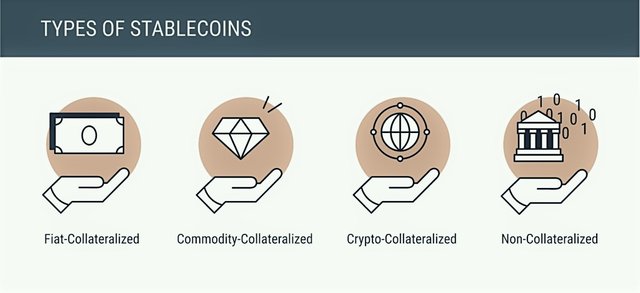Stablecoin - Taking Volatility Out of Crypto

Why crypto?
One of the biggest reasons that cryptocurrencies came into existence was to eliminate the need for intermediaries in financial transactions. However, it became a case of ‘penny wise pound foolish’. While the Bitcoin eliminated intermediaries and the associated costs, the lack of stability resulted in the unacceptance of cryptocurrency as a mainstream instrument in a retail transaction. One of the reasons for the instability or the volatility of cryptocurrency is that it is not pegged to do any asset with a constant value.
What if there was a cryptocurrency without the dubious attribute of volatility? What if the value of the cryptocurrency was pegged to a real-world asset with absolute value? What if all these advantages were presented with all the advantages of any cryptocurrency including decentralization and security?
Enter Stablecoin
There was a time when the value of the Bitcoin was fluctuating so much that on one day, you could buy a Lamborghini with a couple of Bitcoins and the very next day, it might not even be worth a pizza. While these fluctuations might be appealing for people who are looking to trade currencies and reap profits it might not be a great idea for anyone to use these kinds of currencies for business purposes in the retail market.
This is where the relevance and importance of Stablecoin come to the forefront.
Stablecoin is a type of cryptocurrency that as the name suggests, has an absolute stable value. This presents a lot of practical advantages and it might serve as the much-needed catalyst to bring decentralized cryptocurrencies to mainstream transactions, especially for retailers and enterprises.

Different Types of Stablecoins
There are different versions of Stablecoins. One of the basic qualities of any Stablecoin is that it is backed or collateralized by an asset. The two different types of Stablecoins, as can be majorly classified are Fiat-collateralized Stablecoins and crypto-collateralized Stablecoins. Since the value of Fiat currency is quite stable, the most prevalent kind of Stablecoin is the Fiat-backed Stablecoin. However, crypto-backed Stablecoins are slowly gaining traction, and Stablecoins like DAO by Maker stand as good examples. Since cryptocurrencies are escaping the shackles that are pulling them towards traditional centralization, and trending towards an open and decentralized financial ecosystem backed by tools, Stablecoins are expected to play an integral role in the market.
With a volatile currency like Bitcoin, it might have been difficult for business and online merchants to know their financial runway. However, the introduction of Stablecoins can change this landscape. Stablecoins can also mitigate the overpayment risk, which served as one of the major deterrents for retail adoption of cryptocurrencies. With the growth of decentralized finance with open protocol lending services, prediction markets and more, Stablecoins have proved to be useful and dependable mediums of payment.
For any trading, investors need stable pegs to jump in and out of cryptocurrency trading. Since Stablecoins are backed by assets, it makes it easier for investors to trade. The number of Stablecoins and the assets pegged to them has been on the increase in exchanges like Binance, Coinbase, and Bitfinex, and is one of the most important indicators of the growing popularity of Stablecoins.
Another compelling reason that makes Stablecoins inevitable is with remittances. The projected CAGR for remittances in the global arena is in the order of about 25% from 2019 to 2024.
How It All Started?
Tether was one of the first Stablecoins to emerge in the market. It was pegged to the USD. It became enormously popular during the ICO craze. However, Tether struggled to retain banking reserves and it led to Tether losing its parity with the United States dollar.
The rise and fall of Tether have given a fillip to a series of new Stablecoins and the increase in the emphasis of transparency. Projects like USDC - backed by Coinbase and Circle - also offers auditing of banking reserves and it provides a better assurance.
Decentralized and open lending platforms like Maker and its Stablecoin Dai have presented some long-term narratives. Benefits to users receive Dai for sending the underlying collateral, Ether, to Collateralized Debt Positions, which in return, mints Dai.
In all of this, it is interesting to note that Tether still dominates the Fiat-collateralized Stablecoin space. It has more than $2 billion in customer deposits.
The Future Of Stablecoins
Inferred from a recent analysis it is evident that Fiat-collateralized Stablecoins might follow a model that is quite similar to the competitive interest rates offered by banks - in terms of rebates paid out to explicit Stablecoin users.
The volatility of crypto coins was the apple of the eye for many fans. In addition to this, Stablecoins might also have disadvantages in censorship resistance and custodial risk. However, in all of these, the very prospect of crypto coins being used in mainstream retail transactions trump's every other disadvantage, and in the near future, Stablecoins can be expected to rule the crypto markets.